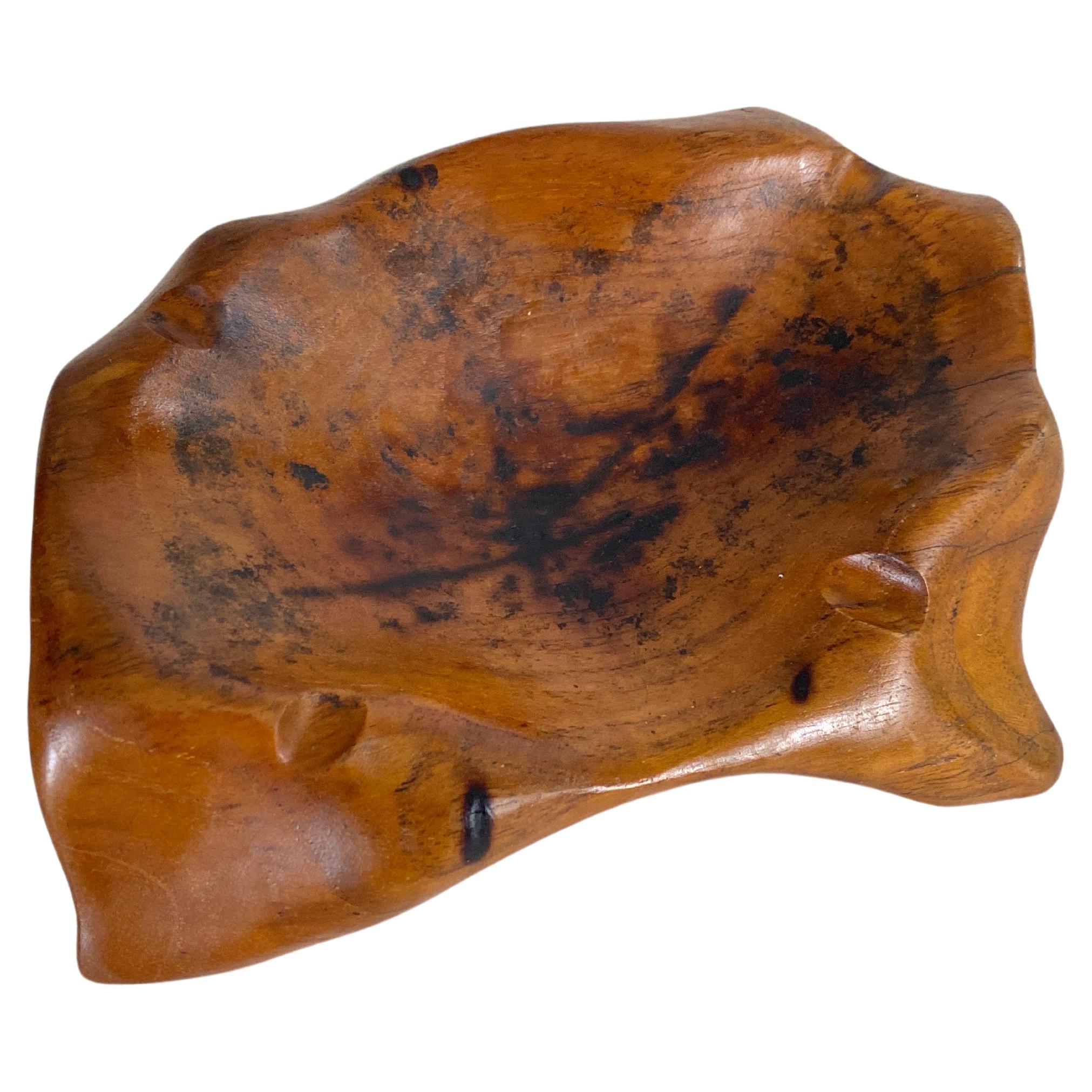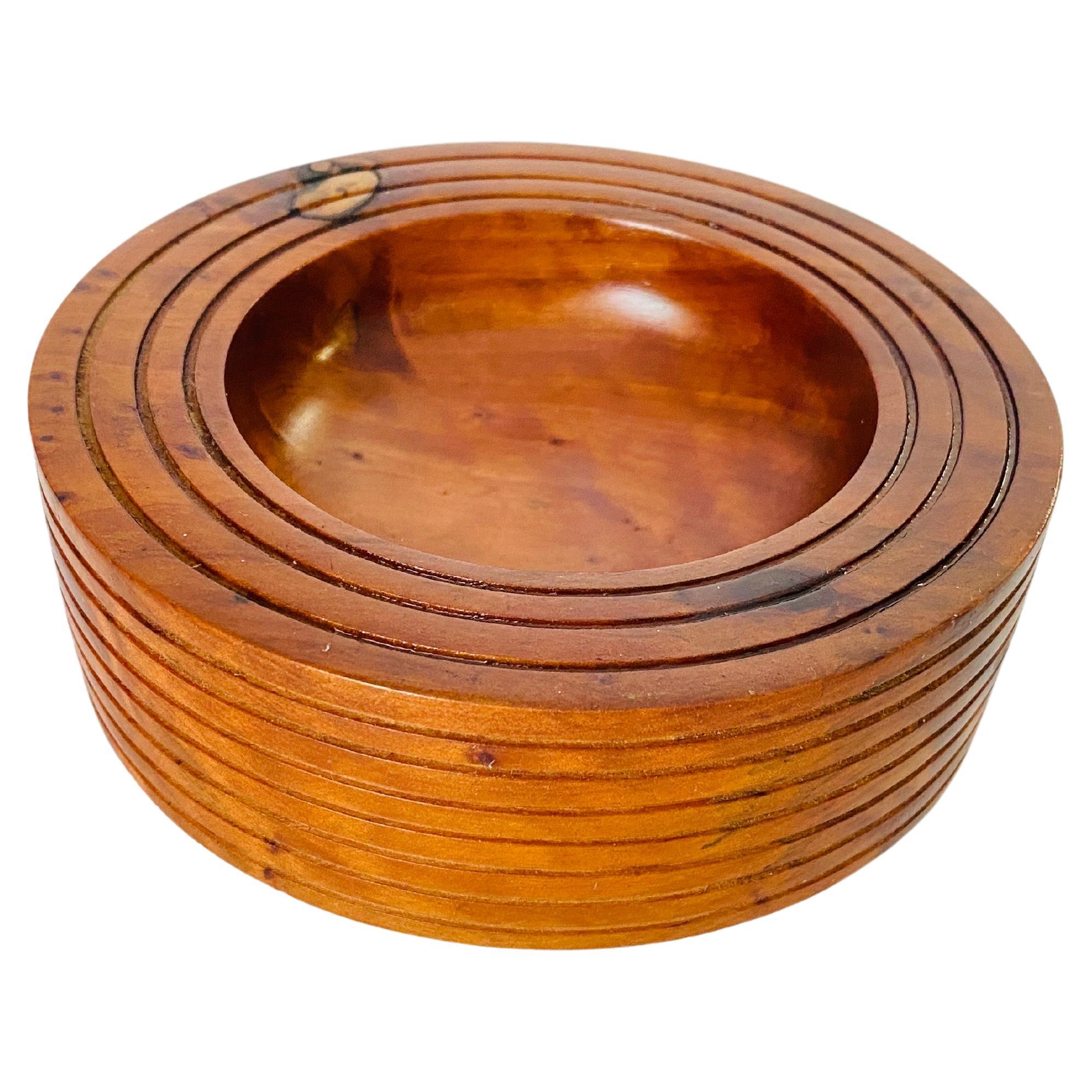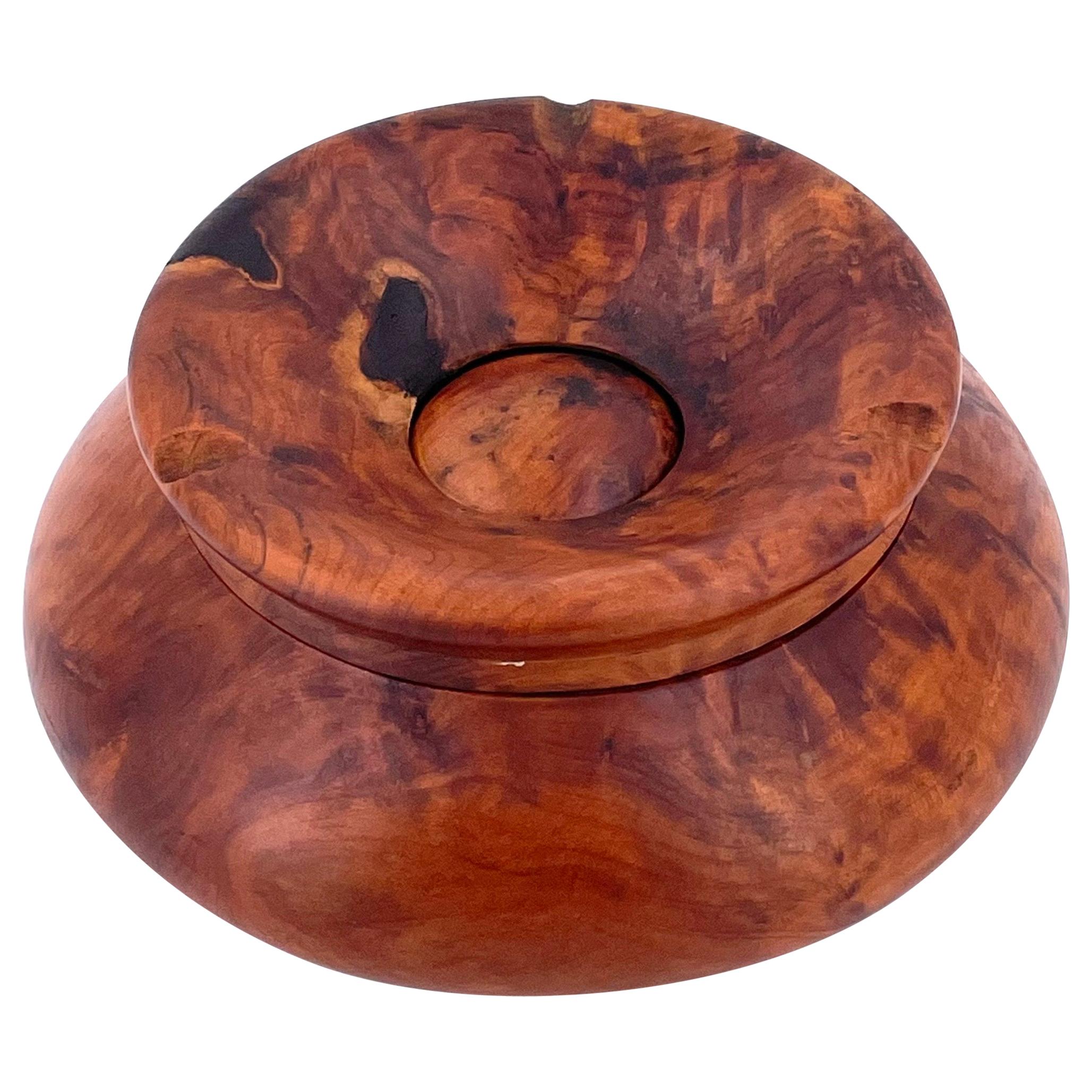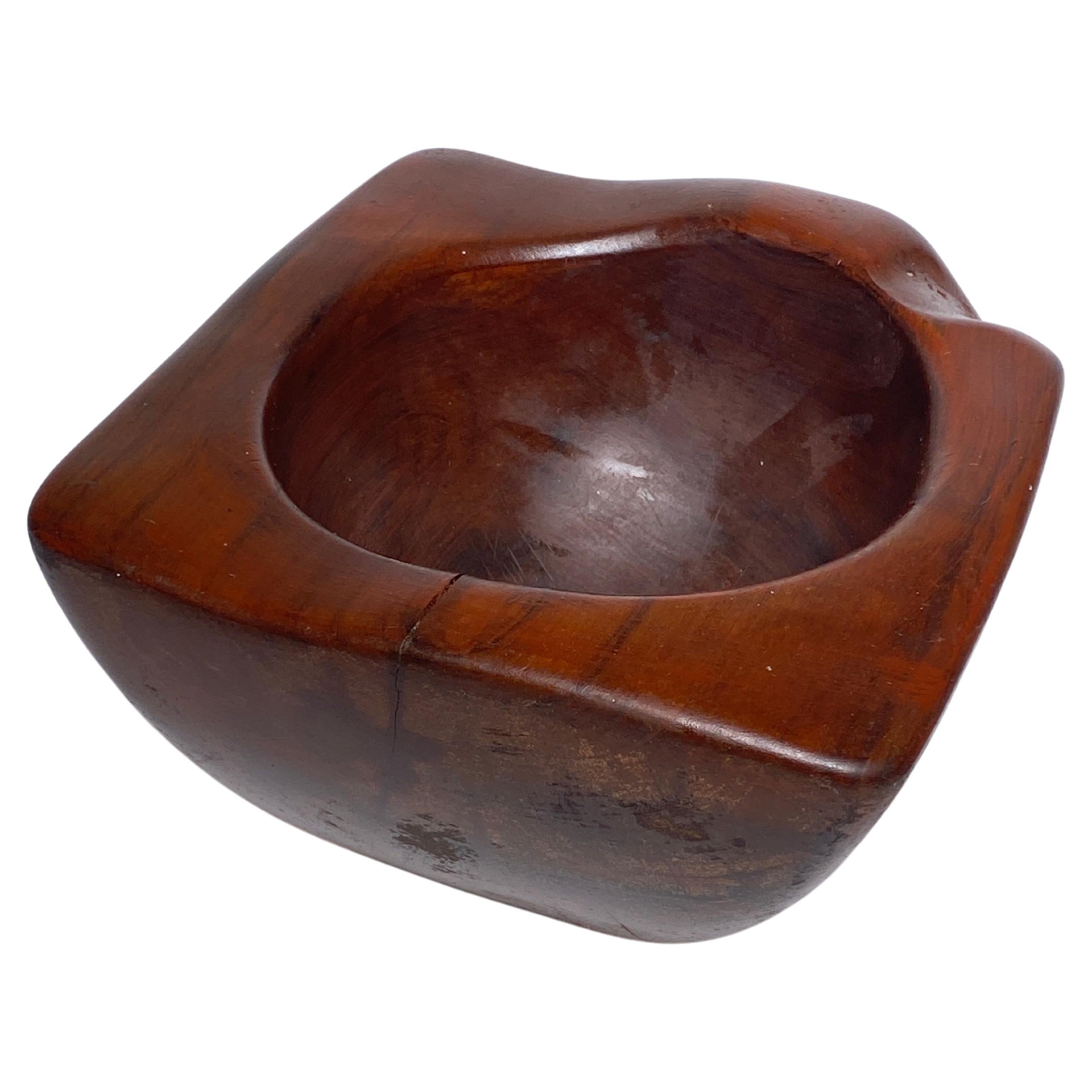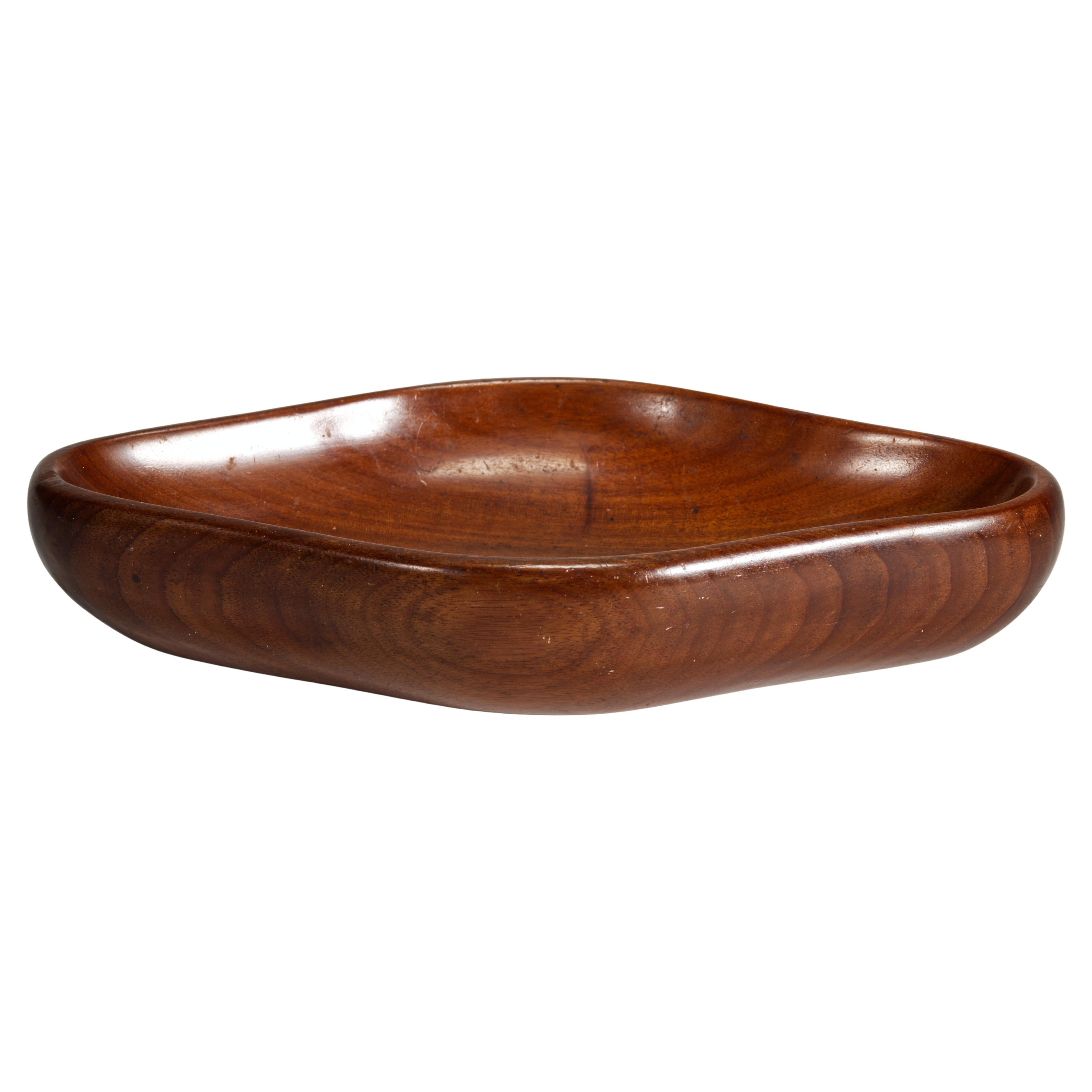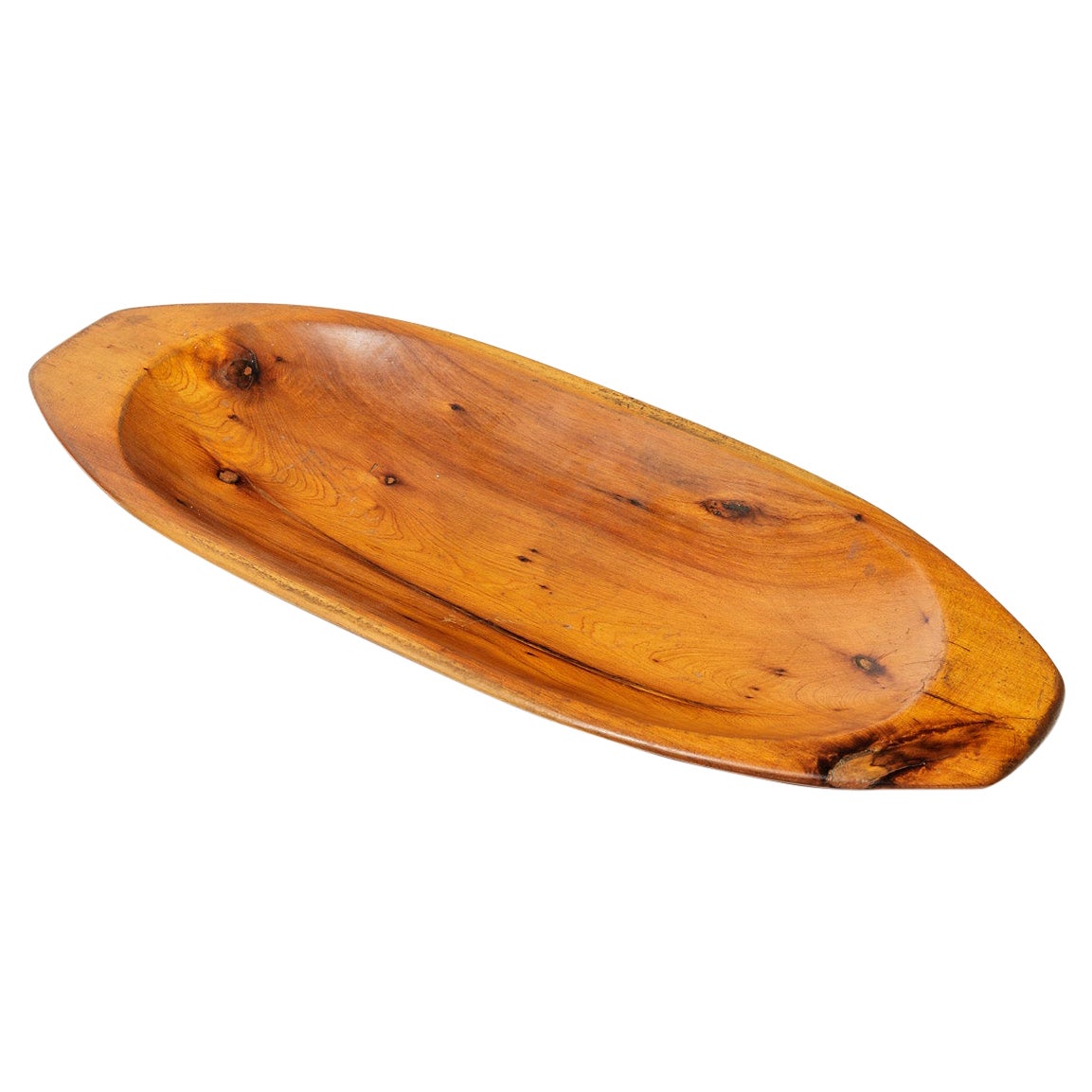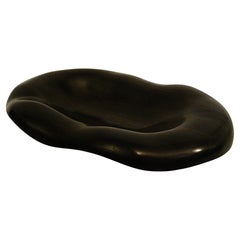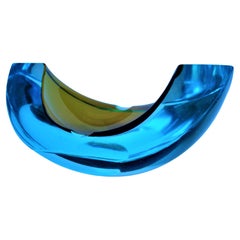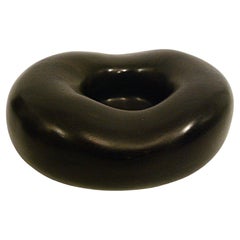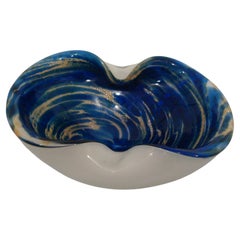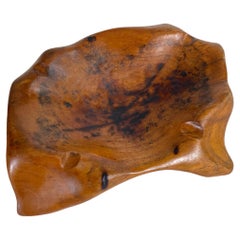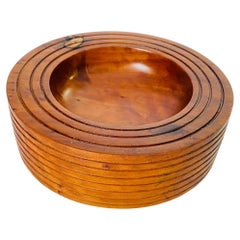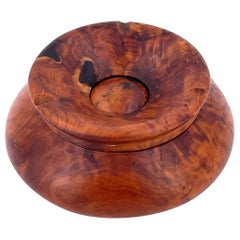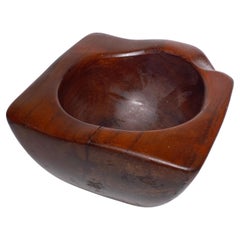Articoli simili a Alexandre Noll Portacenere in legno esotico / Piatto firmato, Francia, circa 1950
Vuoi altre immagini o video?
Richiedi altre immagini o video al venditore
1 di 11
Alexandre Noll Portacenere in legno esotico / Piatto firmato, Francia, circa 1950
3860,58 €
4825,73 €20% in meno
Informazioni sull’articolo
Grazioso posacenere / ciotola / piatto Alexandre Noll. Scolpito in legno esotico.
Posacenere per sigari intagliato a mano di Alexandre Noll.
Metà secolo.
Francia, 1950 circa
Firma incisa a mano sul lato inferiore "ANoll".
L'esempio mostra una piccola usura superficiale sul lato inferiore, dovuta al contatto con il tempo. E alcune crepe nel legno. Nel complesso ottime condizioni vintage.
Dal 1995 siamo specializzati nella vendita di oggetti in stile Art Déco, Art Nouveau e Vintage. Per qualsiasi domanda siamo a vostra disposizione. Premendo il pulsante "Visualizza tutto dal venditore". E si possono vedere altri oggetti in stile in vendita. Perché ci sono così tanti oggetti d'antiquariato in Argentina?
Tra il 1880 e il 1940 ci fu un'ondata di immigrazione incoraggiata dai periodi di guerra che si stavano verificando. La prima guerra mondiale ebbe luogo tra il 1914 e il 1918, mentre la seconda ebbe luogo tra il 1939 e il 1945. I biglietti costavano poco e a Buenos Aires furono accolti a braccia aperte, perché era un Paese in cui tutto era ancora da fare. L'Argentina era il paese delle nuove opportunità, c'era bisogno di manodopera e la libertà religiosa era assicurata, in molti casi i membri della famiglia viaggiavano per primi fino a quando non si erano sistemati e poi il resto dei membri della famiglia li raggiungeva. Nel museo degli immigrati "Ellis Island Immigrant Building" di New York si possono vedere i manifesti promozionali delle imbarcazioni che li avrebbero portati verso una nuova vita. Tra il 1895 e il 1896, secondo l'indice Maddison Historical Statistics, l'Argentina aveva il più alto PIL (prodotto interno lordo) pro capite del mondo; questa situazione era dovuta alla grande quantità di cibo esportato verso i Paesi europei in guerra. Le navi argentine partivano dal porto di Buenos Aires con generi alimentari, ma tornavano con mobili, vestiti ed elementi di costruzione (è comune vedere in questi vecchi edifici del quartiere storico di San Telmo le travi con la scritta "Made in England"), così come molti mercati che furono costruiti a Buenos Aires, come il Mercato di San Telmo, la cui struttura fu portata via nave e successivamente assemblata in via Defensa 900. Con la grande influenza degli immigrati europei che vivevano nel Paese, i figli delle classi più elevate si recavano a studiare in Francia, tanto che il 27 giugno 1928 fu inaugurata "La Maison Argentinienne", nella città internazionale di Parigi, che ospitò molti argentini che studiavano in Francia. È la quarta casa costruita dopo Francia, Canada e Belgio, ed è la prima di lingua spagnola. Ancora oggi è in funzione (17 Bd Jourdan, 75014, Parigi, Francia). Molti dei figli di queste famiglie benestanti, che frequentavano mostre d'arte internazionali, musei e corsi d'arte all'estero, si interessarono allo stile europeo. Per questo motivo Buenos Aires è stata definita all'epoca "la Parigi del Sud America". Tra il 1890 e il 1920 furono costruiti più di cento palazzi sul viale Alvear, il viale più esclusivo di Buenos Aires. Oggi alcuni di questi palazzi sono stati trasformati in musei, hotel e ambasciate. Nel 1936 fu inaugurato l'edificio Kavanagh, il più alto edificio in cemento armato del Sud America. Nel 1994 l'American Society of Civil Engineers l'ha definita una "pietra miliare dell'ingegneria internazionale" e oggi è considerata patrimonio mondiale dell'architettura moderna. All'epoca era comune assumere architetti stranieri come Le Corbusier, che visitò Buenos Aires/Argentina nel 1929 e nel 1948 elaborò i progetti di una casa costruita nella città di La Plata (dichiarata Patrimonio dell'Umanità). Nel 1947, l'architetto ungherese Marcelo Breuer progettò il "Parador Ariston" nella città balneare di Mar del Plata. Dopo che uno studente argentino dell'Università di Harvard lo ha convinto a venire in Argentina. Ha lavorato a un progetto di sviluppo urbano nella zona di Casa Amarilla, a La Boca. L'architetto ucraino Vladimiro Acosta arriva in Argentina nel 1928 e lavora come architetto fino a quando si trasferisce in Brasile. Antonio Bonet, architetto spagnolo che ha lavorato con Le Corbusier a Parigi, arriva in Argentina nel 1937, dove realizza diverse opere architettoniche e nel 1938 progetta la nota sedia BFK. Andres Kálnay, di origine ungherese, ha realizzato circa 120 capolavori architettonici, tra i quali spicca l'ex birreria di Monaco di Baviera, di cui ha persino progettato i mobili. L'architetto tedesco Walter Gropius, direttore del Bauhaus, visse in Argentina, dove scrisse articoli per la rivista "Sur" e fondò a Buenos Aires uno studio di architettura con Franz Möller, anch'egli architetto, dove costruì due case. Nello stesso periodo diversi famosi designer decisero di immigrare in Argentina, tra cui il noto designer francese Jean-Michel Frank, che arrivò nel Paese nel 1940 e lavorò anche per la famiglia Rockefeller. Venivano realizzati pezzi speciali, venduti esclusivamente nel paese, come la nota azienda tedesca "WMF", che vendeva i suoi prodotti per catalogo, scelti dalle signore dell'alta società nella lista dei regali di nozze, così come i pezzi disegnati da Christofle. Lo scultore svizzero Alberto Giacometti ha realizzato pezzi speciali per le ville argentine. Nel 1904 fu fondata a Buenos Aires la prima filiale Jansen al di fuori di Parigi, poiché la clientela argentina richiedeva una grande quantità di mobili, dalla fine del XIX secolo alla metà del XX secolo. Nel 1970, il marchio Rigolleau Argentina realizza pezzi autorizzati da Lalique. Anche i marchi Maple e Thompson hanno aperto un negozio nel Paese. L'artista plastico francese Marcel Duchamp si trasferisce in Argentina nel 1918-1919. Vetro firmato Gallé, Charder, Leverre, Schneider, Muller e altre aziende francesi. Venivano acquistati nei negozi di fiori e regalati alle signore con bellissime composizioni floreali. Alcuni produttori di mobili si recavano alle fiere internazionali e acquistavano i modelli per produrre i mobili in Argentina, come l'azienda di mobili Englander & Bonta, che acquistava i modelli in Italia. Vale la pena ricordare che in Argentina abbiamo la più grande comunità di italiani al di fuori dell'Italia: si stima infatti che il 70% degli abitanti abbia almeno un discendente italiano, seguito dagli immigrati spagnoli. I più importanti negozi di arredamento in Argentina: Comte è stato fondato nel 1934 (sotto la gestione diretta di A. Michell Frank nel 1940). Nordiska (società svedese fondata nel 1934). Churba nel 1960, un'azienda che portava i designer stranieri a presentare i loro mobili nel paese: Danimarca: (Arne Jacobsen, Finn Juhl, Bender Madsen, Ejner Larsen, Poul Kjaerholm, Hans Wegner) Svezia: (Hans Agne Jakobsson, Gustavsberg) Stati Uniti: (Herman Miller) Finlandia: (Lisa Johansson, Folke Arstrom, Tapio Wirkkala, Timo Sarpaneva) Fabbrica svedese: (Orrefors): (Littala, Vico Magistretti, Emma Gismondi, Gae Aulenti, Angelo Mangiarotti, Elio Martinelli, Gianna Celada, Angelo Mangiarotti, Mario Bellini, Carlo Scarpa) Finlandia: (Olivia Toikka) Plata Lappas (Lappas Silver): un'oreficeria fondata nel 1887 in Argentina da Alcibiades Lappas di origine greca. Nel 2019, in Argentina, si terrà il "Congresso mondiale dell'Art Déco". L'Argentina conta attualmente più di 100 edifici Art Déco e altri 90 edifici Art Nouveau in tutta la città di Buenos Aires. L'Argentina è un Paese che non è stato coinvolto in molte guerre e per questo è stato un rifugio per opere d'arte e oggetti d'antiquariato di diverse epoche, a differenza dei Paesi europei. È per questo che molti collezionisti, musei e antiquari di tutto il mondo lo visitano, e non dovreste perdere l'opportunità di visitare questo grande Paese.
- Creatore:Alexandre Noll (Scultore)
- Dimensioni:Altezza: 4 cm (1,58 in)Larghezza: 23 cm (9,06 in)Profondità: 13 cm (5,12 in)
- Stile:Mid-Century moderno (Nello stile di)
- Materiali e tecniche:
- Luogo di origine:
- Periodo:
- Data di produzione:circa 1940-1950
- Condizioni:Usura compatibile con l’età e l’utilizzo. L'unico danno è una crepa naturale sul legno, visibile nelle foto. Non toglie l'aspetto fantastico dell'intaglio.
- Località del venditore:Buenos Aires, AR
- Numero di riferimento:1stDibs: LU2027330988292
Informazioni sul venditore
4,9
Venditore professionale selezionato
Ogni venditore supera rigorosi standard di autenticità e affidabilità
Fondazione nel 2002
Venditore 1stDibs dal 2016
326 vendite su 1stDibs
Tempo di risposta standard: <1 ora
- SpedizioneRecupero del preventivo…Spedizione da: Buenos Aires, Argentina
- Politica di reso
Alcune parti di questa pagina sono state tradotte automaticamente. 1stDibs non può garantire che le traduzioni siano corrette. L’inglese è la lingua predefinita del sito.
Garanzia di autenticità
Nell’improbabile caso in cui si verifichi un problema con l’autenticità di un articolo, contattaci entro un anno per ottenere un rimborso completo. DettagliGaranzia di rimborso
Se il tuo articolo non corrisponde alla descrizione, è danneggiato durante il trasporto o non arriva, contattaci entro 7 giorni per un rimborso completo. DettagliAnnullamento entro 24 ore
Hai un periodo di tolleranza di 24 ore per annullare il tuo acquisto, senza necessità di fornire spiegazioni.Venditori professionali selezionati
I nostri venditori di livello internazionale devono aderire a rigorosi standard di servizio e qualità, garantendo l’integrità delle inserzioni.Garanzia miglior prezzo
Se scopri che un venditore ha pubblicato altrove lo stesso articolo a un prezzo più basso, applicheremo lo stesso prezzo.Consegna globale affidabile
La nostra rete di vettori leader del settore offre opzioni di spedizione specializzate in tutto il mondo, inclusa la consegna personalizzata.Altro da questo venditore
Mostra tuttoAlexandre Noll, posacenere in legno d'ebano, firmato, Francia, 1950 circa.
Di Alexandre Noll
Grazioso posacenere / ciotola / piatto Alexandre Noll. Scolpito in legno di ebano.
Posacenere per sigari intagliato a mano di Alexandre Noll.
Metà secolo.
Francia, 1950 circa
Firma ...
Categoria
Metà XX secolo, Francese, Mid-Century moderno, Altri arredi e oggetti da...
Materiali
Legno, Ebano
5966 € Prezzo promozionale
20% in meno
Spedizione gratuita
Grande posacenere in vetro di Murano Sommerso Cenedese, Italia, 1960
Di Cenedese
Grande posacenere in vetro di Murano Glass Sommerso di Cenedese. I.S.A. Italy 1960
Utilizzando la tecnica del Sommerso, questo grande e pesante pezzo di vetro presenta un design inso...
Categoria
Metà XX secolo, Italiano, Mid-Century moderno, Accessori per tabacco
Materiali
Vetro di Murano
Scultura / Ciotola in legno di ebano di Alexandre Noll. Firmato, Francia, 1950 circa.
Di Alexandre Noll
ALEXANDRE NOLL (1890-1970)
Ciotola in ebano intagliato di Alexandre Noll, 1960 circa.
Alexandre Noll, un'adorabile persona ciotola. Scolpito in legno di ebano.
Scultura scolpita a m...
Categoria
Metà XX secolo, Francese, Mid-Century moderno, Piatti decorativi e svuot...
Materiali
Legno, Ebano
5966 € Prezzo promozionale
20% in meno
Spedizione gratuita
Posacenere in vetro artistico di Murano blu e oro / Vide-Poche di Barbini, Italia
Di Alfredo Barbini
Portacenere in vetro artistico di Murano soffiato a mano in blu e oro della metà del secolo scorso / Vide-Poche di Alfredo Barbini.
Portacenere in vetro artistico di Alfredo Barbini,...
Categoria
Metà XX secolo, Italiano, Mid-Century moderno, Accessori per tabacco
Materiali
Vetro di Murano
525 €
Spedizione gratuita
Vaso / Ciotola in vetro di Murano Rostrato Barovier Toso Italian Vintage, circa 1938
Di Ercole Barovier, Ferro Toso Barovier
Vaso / ciotola Rostrato Murano in vetro artistico d'epoca Barovier Toso, circa 1938
Uno squisito centrotavola della metà del XX secolo di Barovier & Toso in vetro soffiato di Murano...
Categoria
Metà XX secolo, Italiano, Mid-Century moderno, Vetro
Materiali
Vetro di Murano
1544 € Prezzo promozionale
20% in meno
Gustave Keller Paris Set per fumatori da scrivania con scatola di sigarette e sigari, Francia, 1930
Di Gustave Keller Freres
Gustave Keller Paris Scatola di sigarette / Cigar root set da tavolo per fumatori. Francia 1930.
La scatola può essere utilizzata sia per le sigarette che per i sigari, poiché ha due...
Categoria
Metà XX secolo, Francese, Art Déco, Accessori per tabacco
Materiali
Metallo, Argento 925
Ti potrebbe interessare anche
Posacenere / Centrotavola in Wood brutalista del 1960
Di George Nakashima, Alexandre Noll
1960 Posacenere/centrotavola brutalista in legno, nello stile di Noll o Nakashima.
Categoria
Vintage, Anni 1960, Francese, Mid-Century moderno, Piatti decorativi e s...
Materiali
Legno
280 € Prezzo promozionale
20% in meno
1970 Posacenere in legno massiccio Francia colore marrone
1970 posacenere in legno massiccio, vide poche, oggetto decorativo.
Marrone Colore.
Categoria
Vintage, Anni 1970, Francese, Mid-Century moderno, Posacenere
Materiali
Ottone
280 € Prezzo promozionale
20% in meno
Posacenere americano di metà secolo in legno di radica intagliato a mano
Un bel pezzo di posacenere in legno di radica intagliato a mano con un coperchio rimovibile per mantenere i fumi all'interno dell'abitazione.
Categoria
XX secolo, Americano, Mid-Century moderno, Altri accessori da scrivania
Materiali
Legno
157 € Prezzo promozionale
20% in meno
Posacenere / Centrotavola in Wood brutalista del 1950
Di Alexandre Noll
1950 Posacenere/centrotavola brutalista in legno, nello stile di Noll o Nakashima.
Categoria
Vintage, Anni 1950, Francese, Mid-Century moderno, Piatti decorativi e s...
Materiali
Legno
360 € Prezzo promozionale
20% in meno
Ciotola in mogano intagliato nello stile di Arthur Umanoff, metà del secolo scorso.
La ciotola allungata vintage in legno intagliato presenta un'elegante forma in stile modernista con angoli morbidi e arrotondati, che mette in mostra la bellezza naturale e le ricche...
Categoria
Metà XX secolo, Sudamericano, Mid-Century moderno, Ciotole decorative
Materiali
Legno, Mogano
Piatto scultoreo in legno d'ulivo del 1950 circa Ciotola di design francese
Di Alexandre Noll
Design francese - XX secolo - Nello stile di Alexandre Noll
Realizzato nel 1950 circa
Piatto o pietanza scultorea in Wood / vide poche
Originale in buone condizioni
Misur...
Categoria
Fine XX secolo, Francese, Mid-Century moderno, Piatti decorativi e svuot...
Materiali
Legno
